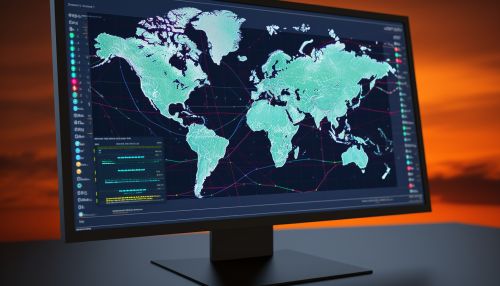The Role of Geoinformatics in Predicting Urbanization Trends
Introduction
Geoinformatics, often referred to as geospatial information science, is a discipline that uses a combination of information technology and geographical science to manage and analyze spatial data. This field has been instrumental in predicting urbanization trends, as it allows for the analysis of complex spatial relationships and patterns. This article will delve into the role of geoinformatics in predicting urbanization trends, discussing its applications, methodologies, and impact on urban planning and development.


Geoinformatics: An Overview
Geoinformatics is a multidisciplinary field that encompasses various aspects of geography, information science, and computer science. It involves the collection, classification, storage, retrieval, and dissemination of spatial data, using advanced technologies such as Geographic Information Systems (GIS), Remote Sensing (RS), and Global Positioning System (GPS). These technologies provide the tools necessary to analyze and interpret spatial data, enabling the prediction of trends and patterns in various fields, including urbanization.
Urbanization: A Global Phenomenon
Urbanization is a complex process that involves the growth of urban areas as a result of population increase and the expansion of economic activities. It is a global phenomenon that has significant implications for social, economic, and environmental systems. Predicting urbanization trends is crucial for sustainable urban planning and development, and this is where geoinformatics comes into play.


Role of Geoinformatics in Predicting Urbanization Trends
Geoinformatics plays a pivotal role in predicting urbanization trends. It provides the tools and methodologies needed to analyze and interpret spatial data, enabling urban planners and policymakers to make informed decisions about urban development. Here are some of the ways in which geoinformatics contributes to predicting urbanization trends:
Data Collection and Analysis
Geoinformatics technologies such as GIS, RS, and GPS are used to collect and analyze spatial data related to urbanization. This data can include information about land use, population density, infrastructure, and environmental factors, among others. The analysis of this data allows for the identification of trends and patterns in urban growth, which can be used to predict future urbanization trends.


Urban Growth Modeling
Geoinformatics is also used in urban growth modeling, a process that involves the use of mathematical and computational models to simulate and predict urban growth patterns. These models can incorporate various factors, such as economic conditions, demographic trends, and environmental constraints, providing a comprehensive picture of urban growth.
Spatial Planning and Decision Support
Geoinformatics provides a spatial perspective on urbanization, enabling the development of spatial planning strategies and decision support systems. These tools can help urban planners and policymakers to assess the impacts of different development scenarios, identify suitable areas for development, and make informed decisions about urban growth.


Impact of Geoinformatics on Urban Planning and Development
The use of geoinformatics in predicting urbanization trends has had a profound impact on urban planning and development. It has enabled a more data-driven approach to urban planning, allowing for the development of more sustainable and resilient urban systems. Some of the key impacts of geoinformatics on urban planning and development include:
Improved Decision-Making
Geoinformatics provides a wealth of data and analytical tools that can support decision-making in urban planning. This can lead to more informed and effective decisions, resulting in better outcomes for urban development.
Enhanced Sustainability
By enabling the prediction of urbanization trends, geoinformatics can contribute to the development of more sustainable urban systems. This can involve the identification of suitable areas for development, the assessment of environmental impacts, and the implementation of sustainable land use practices.
Increased Resilience
Geoinformatics can also contribute to increased resilience in urban systems. By predicting future urbanization trends, it can help to identify potential risks and vulnerabilities, enabling the development of strategies to mitigate these risks and enhance urban resilience.


Conclusion
In conclusion, geoinformatics plays a crucial role in predicting urbanization trends. Its applications in data collection and analysis, urban growth modeling, and spatial planning provide the tools and methodologies needed to understand and predict urban growth patterns. This, in turn, can support more informed and effective decision-making in urban planning, leading to more sustainable and resilient urban systems.
